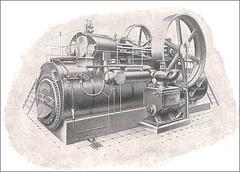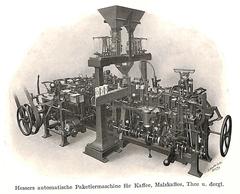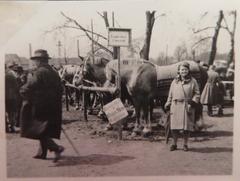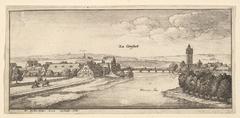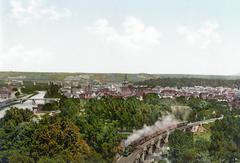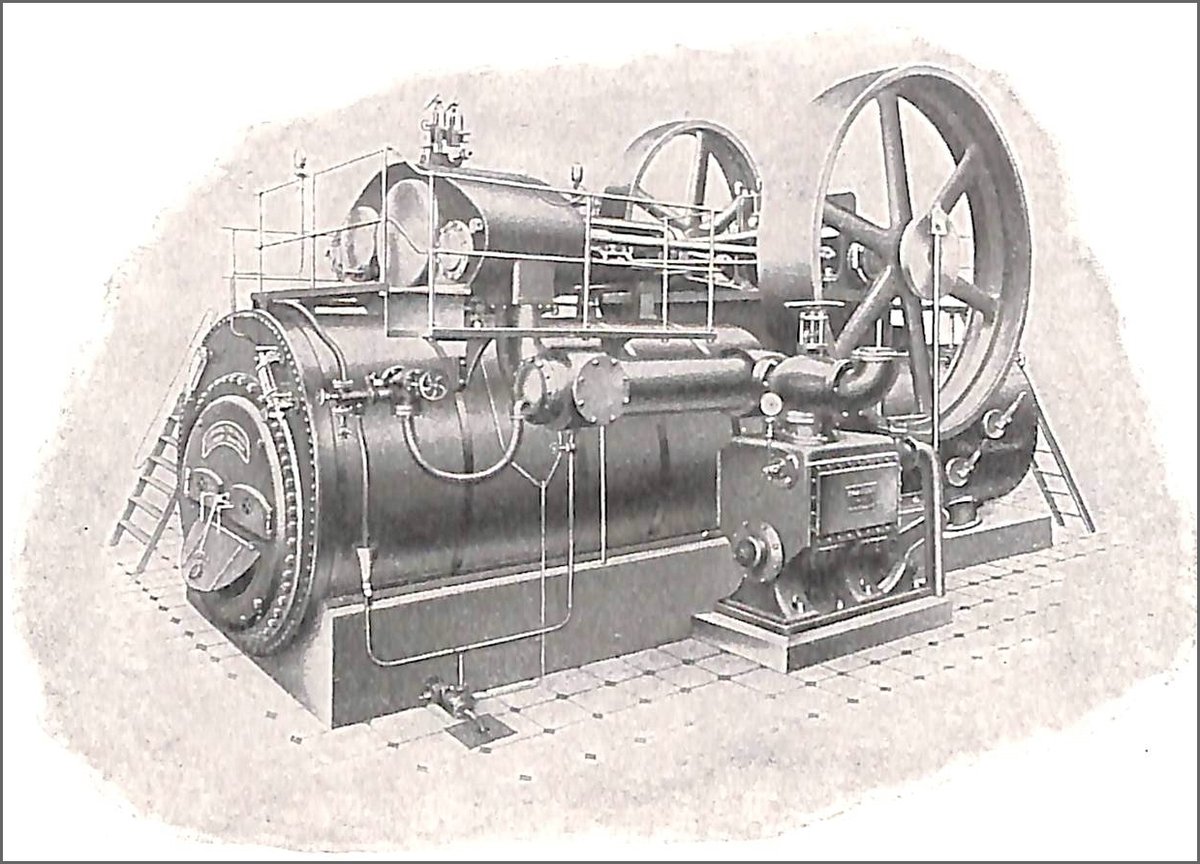
Bad Cannstatt, Stuttgart, Germany: Visiting Guide — Tickets, Hours, and Top Attractions
Date: 14/06/2025
Introduction: Bad Cannstatt’s Timeless Appeal
Set along the picturesque Neckar River, Bad Cannstatt is Stuttgart’s oldest district and a living testament to the city’s rich cultural and historical tapestry. Famous for its mineral springs—the second-largest in Europe after Budapest—Bad Cannstatt has drawn visitors for centuries seeking wellness, history, and vibrant local festivities. From ancient Roman settlements and medieval market privileges to its role in the automotive revolution and the world-renowned Cannstatter Volksfest, the district seamlessly bridges the past and present.
This comprehensive guide brings together essential information for travelers: visiting hours, ticketing, accessibility, transport tips, and highlights of must-see attractions. Whether you’re captivated by Roman ruins, eager to relax in a historic spa, or planning to join one of Europe’s grandest festivals, Bad Cannstatt offers a multi-layered experience for every visitor (Bad Cannstatt Blog, Stuttgart Tourist).
Table of Contents
- Introduction
- Early History: Roman Foundations & Medieval Growth
- Spa Culture and Mineral Springs
- Festivals: Cannstatter Volksfest & Beyond
- Automotive Heritage and Museums
- Architectural & Cultural Landmarks
- Parks, Gardens, and the Neckar River
- Wine, Food, and Markets
- Getting Around: Transport & Accessibility
- Visiting Hours & Tickets: Quick Reference
- Practical Traveler Tips
- Frequently Asked Questions (FAQ)
- Conclusion: Plan Your Bad Cannstatt Experience
- References & Further Reading
Early History: Roman Foundations & Medieval Growth
Roman Roots
Bad Cannstatt’s history stretches back over 250,000 years, with significant settlement evidence from the Stone Age through the Roman era. The Romans established Canstat ad Neccarum here due to the area’s abundant mineral springs, which they believed to have healing properties. Remnants of Roman baths and fortifications, especially the Römerkastell site, reflect this ancient heritage (Stadtmuseum Bad Cannstatt).
Medieval Market Town
First documented in 708 CE, Cannstatt flourished as a medieval market town and was granted city rights in 1330. The Altstadt (Old Town) is characterized by cobblestone streets, half-timbered buildings, and the Klösterle barn—the oldest residential structure in Stuttgart. Public monuments and statues, like that of local writer Thaddäus Troll, enrich the district’s storied landscape (Stuttgart Citizen).
Spa Culture and Mineral Springs
Europe’s Second-Largest Mineral Water Reserve
With 19 mineral-rich springs producing over 500 liters per second, Bad Cannstatt has been a spa destination since Roman times (Tourist in Stuttgart). The 19th-century rise of spa culture led to the construction of elegant bathhouses and the iconic Kursaal. Today’s spa facilities include:
- MineralBad Cannstatt: Thermal pools and wellness treatments in a historic setting.
Open daily 9:00 AM–10:00 PM; adult admission from €18 (discounts for children/seniors). Advance booking advised (Kingdom History Blog). - Das Leuze and Mineralbad Berg: Additional modern mineral spas, each offering a range of pools and saunas.
Kurpark Bad Cannstatt
Adjacent to the spas, the Kurpark is a tranquil green space ideal for relaxation and recreation, with fountains and walking paths fed by mineral springs (Travel Hotel Expert).
Festivals: Cannstatter Volksfest & Beyond
Cannstatter Volksfest
Founded in 1818 by King Wilhelm I, the Cannstatter Volksfest is Germany’s second-largest beer festival and a cornerstone of local tradition. Held each autumn on the Cannstatter Wasen fairgrounds, it attracts over four million visitors with beer tents, traditional parades, amusement rides, and fireworks (Cannstatter Volksfest History).
Entry is free; tickets for rides and tent reservations are available online or onsite. Arrive early and use public transport, especially on weekends.
Stuttgarter Frühlingsfest
Europe’s largest spring festival, also held at the Wasen, features family-friendly rides and international food stalls (Stuttgart.de).
Automotive Heritage and Museums
Mercedes-Benz Museum
Bad Cannstatt is the birthplace of Gottlieb Daimler’s automotive innovations. The Mercedes-Benz Museum chronicles over 130 years of automotive history with interactive exhibits and vintage vehicles (Wide World Trips).
Open Tuesday–Sunday, 9:00 AM–6:00 PM; adults €10. Guided tours available; purchase tickets online for convenience.
Daimler’s Greenhouse
The site where Daimler secretly built the first automobile engine is commemorated locally and marks a key milestone in industrial history (Stuttgart Citizen).
Architectural & Cultural Landmarks
- Wilhelma Zoo & Botanical Garden: Germany’s only combined zoo and botanical garden, set in a Moorish Revival palace (Wilhelma).
Open daily 8:30 AM–6:00 PM (hours vary seasonally); adults €16–20; family and child discounts available. - Klösterle: Stuttgart’s oldest building, now housing the Stadtmuseum Bad Cannstatt (Stuttgart Tourist).
Open Tuesday–Sunday, 10:00 AM–5:00 PM; adults €5. - Historic Old Town: Free to explore year-round; guided tours offered in English via Stuttgart Marketing.
- Römerkastell: Remnants of the Roman fort, with interpretive signage.
- Kurpark & Rosensteinpark: Expansive parks with gardens, walking trails, and the State Museum of Natural History housed in Schloss Rosenstein (Travel Hotel Expert).
Parks, Gardens, and the Neckar River
- Rosensteinpark: Stuttgart’s largest English-style landscape park, offering scenic walking trails and access to Schloss Rosenstein.
- Neckar River Promenade: Ideal for riverside walks, cycling, and seasonal boat tours (Kingdom History Blog).
- Observation Tower Burgholzhof & Travertinpark: Open-air sites with panoramic city and river views.
Wine, Food, and Markets
Swabian Wine Culture
Surrounded by vineyards, Bad Cannstatt’s wine taverns (Weinstuben) serve regional varietals like Trollinger and Riesling. Wine routes and festivals offer tastings and scenic walks (Wide World Trips).
Local Cuisine
Restaurants and beer gardens feature Swabian classics—Maultaschen, Spätzle, Zwiebelrostbraten—and fresh produce from weekly markets (Travel Hotel Expert).
Getting Around: Transport & Accessibility
- Public Transport: S-Bahn (S1, S2, S3) and U-Bahn (U1, U2, U13, U16) lines connect Bad Cannstatt to Stuttgart’s main station in under 10 minutes (Stuttgart Tourist).
- Driving & Parking: Limited during festivals—use Park+Ride or public transport for convenience (My Corner of Germany).
- Cycling & Walking: RegioRad bike-sharing and extensive walking paths make for easy, eco-friendly travel.
Accessibility: Most attractions and public transit are wheelchair-friendly. Museums and spas offer barrier-free access and loaner wheelchairs. Check individual sites for details.
Visiting Hours & Tickets: Quick Reference
| Attraction | Hours | Ticket Price | Notes |
|---|---|---|---|
| Mercedes-Benz Museum | Tue–Sun 9:00–18:00 | €10 (adult) | Closed Mondays, book online for discounts |
| Wilhelma Zoo & Botanical | Daily 8:30–18:00 | €16–20 (adult) | Family/child discounts |
| Stadtmuseum Bad Cannstatt | Tue–Sun 10:00–17:00 | €5 (adult) | Closed Mondays |
| MineralBad Cannstatt | Daily 9:00–22:00 | From €18 (adult) | Book in advance |
| Cannstatter Volksfest | Annually, late Sep–Oct | Free entry | Rides/beer tents extra, pre-book if poss. |
Practical Traveler Tips
- Book accommodation and festival tables early—the district is busiest during Cannstatter Volksfest and major events (Germany with Amy).
- Bring cash for small purchases and festival stalls, as not all accept cards.
- Wear comfortable shoes for cobblestone streets and park walks.
- Download transport and tourism apps (VVS Mobil, Stuttgart Tourist App) for schedules and maps.
- Tipping: Round up or add 5–10% in restaurants.
- Observe Ruhezeiten (quiet hours) in residential areas, typically 10 pm–6 am.
Frequently Asked Questions (FAQ)
Q: How do I get to Bad Cannstatt from Stuttgart city center?
A: Take the S-Bahn (lines S1, S2, S3) or U-Bahn (U1, U2, U13, U16); journey is 10 minutes.
Q: Are attractions wheelchair accessible?
A: Yes, most major sites and public transport are accessible. Check specific venues for detailed info.
Q: Do I need tickets for the Cannstatter Volksfest?
A: Grounds entry is free; rides and beer tents require tickets, available online or onsite.
Q: Where can I buy tickets for the Mercedes-Benz Museum and Wilhelma Zoo?
A: Both offer online ticket sales and on-site purchase; booking ahead is recommended.
Q: When is the best time to visit Bad Cannstatt?
A: Spring (April–May) and autumn (September–October) for festivals and pleasant weather.
Conclusion: Plan Your Bad Cannstatt Experience
Bad Cannstatt embodies Stuttgart’s dynamic spirit—where ancient Roman relics meet modern automotive marvels, and vibrant festivals enliven historic streets. With its easy accessibility, wealth of attractions, and unique blend of tradition and innovation, Bad Cannstatt is unmissable for culture seekers, wellness travelers, and festival enthusiasts alike.
To enhance your visit, consider using the Audiala app for guided tours, real-time event updates, and interactive maps. For more travel inspiration, explore our related articles and follow us on social media for the latest news and tips.
References & Further Reading
- Bad Cannstatt Blog (Bad Cannstatt Blog)
- Stadtmuseum Bad Cannstatt (Stuttgart Tourist)
- Stuttgart Citizen (Stuttgart Citizen)
- Stuttgart Tourist (Stuttgart Tourist)
- The Crazy Tourist (The Crazy Tourist)
- Cannstatter Volksfest Official Website (Cannstatter Volksfest History)
- Wilhelma Zoo and Botanical Garden (Wilhelma)
